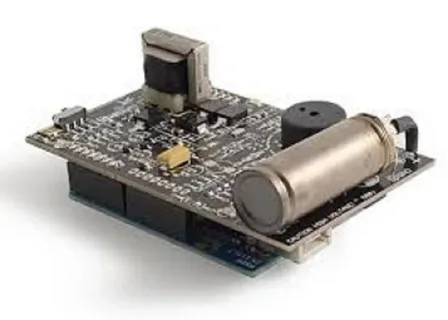The consumer electronic sensors market is projected to witness substantial growth from 2025 to 2035, driven by technological advancements, increasing integration of smart sensors in consumer electronics, and rising demand for IoT-enabled devices. The market was valued at USD 45.9 billion in 2025 and is expected to reach USD 131.8 billion by 2035, reflecting a robust compound annual growth rate (CAGR) of 11.1% during the forecast period. As digital lifestyles expand globally, sensors are becoming foundational components in a wide array of devices, from smartphones and wearables to smart home systems and health monitors.
These sensors enable critical functionalities such as motion detection, temperature monitoring, biometric recognition, and environmental awareness, significantly enhancing user experience and device intelligence. The growing popularity of AI-driven applications and edge computing further amplifies the relevance of sensors, as they serve as the primary interface between the physical world and digital ecosystems. Addition;ally, consumer demand for high-performance, compact, and energy-efficient devices is pushing manufacturers to innovate continuously in sensor technology, miniaturization, and multifunctional design.
As automation and personalization take center stage in modern living, the role of sensors in enabling context-aware features is expanding rapidly. From gesture controls to augmented reality, sensors are transforming how consumers interact with their devices, providing seamless connectivity, safety, and real-time responsiveness.
Get Ahead with Our Report: Request Your Sample Now!
https://www.futuremarketinsights.com/reports/sample/rep-gb-17991
Market Trends
-
Increasing adoption of multi-sensor fusion for advanced user experiences in mobile devices
-
Growth in biometric sensors, including facial recognition and fingerprint sensors in wearables and smartphones
-
Expansion of environmental sensors for air quality, humidity, and UV detection in smart home products
-
Rising use of haptic and proximity sensors in gaming and virtual reality equipment
-
Integration of AI with sensor modules for contextual awareness and energy-efficient operations
Driving Forces Behind Market Growth
-
Proliferation of smart consumer devices such as fitness trackers, earbuds, and home assistants
-
Growing demand for enhanced user interfaces and immersive experiences
-
Rise of IoT ecosystems in homes, vehicles, and personal gadgets
-
Increased focus on health and wellness driving demand for physiological and biosensors
-
Advancements in semiconductor manufacturing enabling smaller, faster, and more accurate sensors

Challenges and Opportunities
-
Sensor calibration and accuracy issues in complex or variable user environments
-
Power consumption challenges in battery-operated devices with multiple active sensors
-
Opportunities in developing hybrid sensors that combine motion, audio, and visual inputs
-
Demand for privacy-preserving sensors, particularly in biometric and environmental monitoring applications
-
Emerging markets offering growth potential for low-cost sensor-enabled electronics
Thorough Market Evaluation: Full Report
https://www.futuremarketinsights.com/reports/consumer-electronic-sensors-market
Recent Industry Developments
-
Introduction of AI-powered sensors with on-device machine learning for real-time data processing
-
Launch of ultra-thin and flexible sensors suitable for foldable devices and wearables
-
Increased collaboration between tech firms and OEMs to co-develop custom sensor platforms
-
Commercialization of radar-based gesture sensors for touchless control in consumer electronics
-
R&D investments focused on next-gen quantum, optical, and gas sensors for advanced use cases
Regional Analysis
-
North America: Strong demand for advanced consumer electronics, smart wearables, and home automation systems; early adoption of AI-integrated sensor technologies
-
Europe: Increasing focus on privacy, energy efficiency, and health tracking features in smart devices; steady growth in premium consumer electronics market
-
Asia Pacific: Dominates global market share with high production capacity in China, South Korea, and Japan; massive consumer base and rapid technological adoption
-
Latin America: Growing demand for mid-range smartphones and connected home products driving sensor integration in local markets
-
Middle East & Africa: Expanding urbanization and smart city development creating opportunities in home automation and consumer lifestyle electronics


